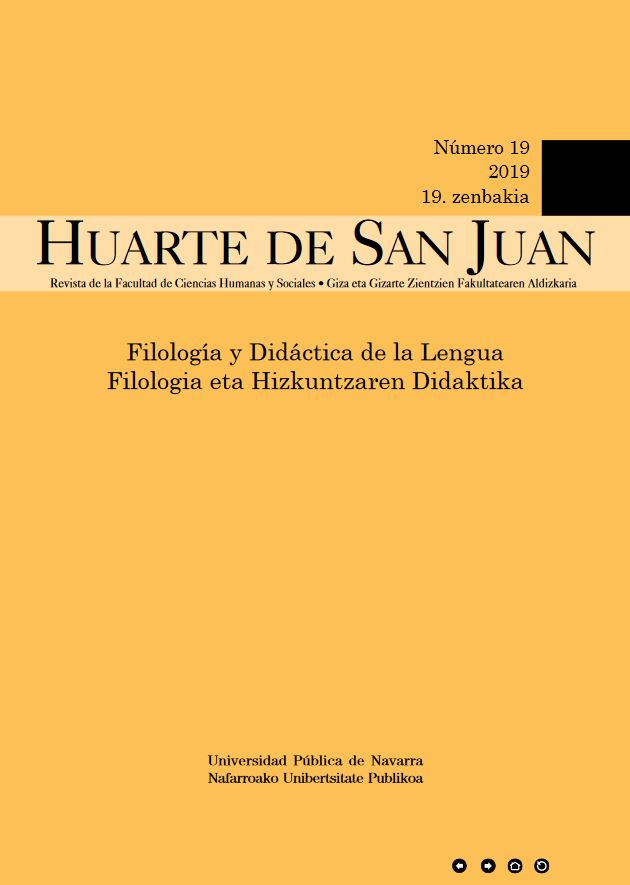The Effectiveness of Translation, Image-based and Video-based Methodologies for Receptive and Productive Vocabulary Acquisition
Palabras clave:
Aprendizaje de vocabulario, vo-cabulario receptivo y productivo, aprendizaje de vocabulario con imágenes, aprendizaje de vocabulario por videoResumen
Este estudio analiza y compara tres metodologías de aprendizaje de vocabulario (tra-ducción en la L1, imágenes y videos) teniendo en cuenta los dos tipos de conocimiento de vo-cabulario: receptivo/pasivo y productivo/activo. Los participantes fueron 52 alumnos de escuela secundaria con edades de 12 a 15 años y ex-puestos a las tres metodologías. Los instru-mentos que se utilizaron fueron un pre-test para analizar conocimiento de vocabulario previo; tres post-tests, uno para cada metodología, y admi-nistrados inmediatamente después de cada tra-tamiento y una semana más tarde; y un cuestio-nario. Los resultados indican que la metodología basada en imágenes parece ser la más efectiva tanto inmediatamente después del tratamiento como una semana después, y que las tres meto-dologías son igualmente efectivas para el apren-dizaje de vocabulario pasivo, pero la traducción y la metodología basada en video son ligeramente mejores para el vocabulario productivo. También se observa que los alumnos prefieren la metodo-logía basada en la imagen
Descargas
Citas
Alqahtani, M. (2015). The importance of vocabulary in language learning and how to be taught. International Journal of Teaching and Education, 3(3), 21-34.
Al-Seghayer, K. (2001). The effect of multimedia annotation modes on L2 vocabu-lary acquisition: A comparative study. Language Learning & Technology, 5(1), 202-232.
Baggett, P. (1989). Understanding visual and verbal messages. Advances in Psychology, 58, 101-124.
Bogaards, P., & Laufer, B. (2004). Vocabulary in a second language: Selection, acquisition, and testing. Amsterdam: John Benjamins Publishing Company.
Brown, H. (2008). Principles of language learning and teaching. White Plains, NY: Pear-son Longman.
Camó, A. C., & Ballester, E. P. (2015). The effects of using L1 translation on young learners’ foreign language vocabulary learning. Elia, 15, 109-134.
Carter, R., & McCarthy, M. (2014). Vocabulary and language teaching. Hoboken: Taylor and Francis.
Collins, A., & Halverson, R. (2010). The second educational revolution: Rethinking education in the age of technology. Journal of Computer Assisted Learning, 26(1), 18-27.
Dastjerdi, H. V., & Farshid, M. (2011). The role of input enhancement in teaching compliments. Journal of Language Teaching and Research, 2(2), 460-466.
Elgort, I. (2018). Technology-Mediated Second Language vocabulary development: A review of trends in research methodology. Calico Journal, 35(1), 1-29.
Filgueira Garro, T. (2014). Modality of input and vocabulary acquisition of English for specific purposes. Unpublished Master Thesis. Retrieved from https://academi-ca-e.unavarra.es/xmlui/handle/2454/15370.
Gómez Pastor, A. (2013). A picture is worth a thousand words: the use of videos in vocabu-lary acquisition. Unpublished Master Thesis. Retrieved from http://academica-e.unavarra.es/xmlui/bitstream/handle/2454/9783/TFM-final.pdf?sequence=1&is-Allowed=y
Griffin, G., & Harley, T. A. (1996). List learning of second language vocabulary. Ap-plied Psycholinguistics, 17, 443-460.
Hashemi, M., & Pourgharib, B. (2013). The effect of visual instruction on new vo-cabularies learning. International Journal of Basic Sciences & Applied Research2(6), 623-627.
Hu, H. P., & Deng, L. J. (2007). Vocabulary acquisition in multimedia environment. US-China Foreign Language, 5(8), 55-59.
Jones, L. (2004). Testing L2 vocabulary recognition and recall using pictorial and written test items. Language Learning and Technology, 8(3), 122-143.
Krashen, S. (2004). Principles and practice in second language acquisition. Oxford: Per-gamon.
Laufer, B. (1998). The development of passive and active vocabulary in a second language: same or different? Applied Linguistics, 19(2), 255-271.
Laufer, B., & Goldstein, Z. (2004). Testing vocabulary knowledge: size, strength, and computer adaptiveness. Language Learning, 54(3), 399-436.
Mashhadi, F., & Jamalifar, G. (2015). Second language vocabulary learning through visual and textual representation. Procedia - Social and Behavioral Sciences, 192, 298-307.
Mayer, R. E. (2001). Multimedia learning. New York: Cambridge University Press.
Meara, P. (1980). Vocabulary acquisition: A neglected aspect of language learning. Language Teaching and Linguistics Abstracts, 13, 221-246.
Paivio, A. (1971). Imagery and verbal processes. New York: Holt, Rinehart, and Win-ston
Pignot-Shahov, V. (2012). Measuring L2 receptive and productive vocabulary knowl-edge. Language Studies Working Papers, 4, 37-45.
Schneider, V. I., Healy, A. F., & Bourne, L. E. (2002). What is learned under difficult conditions is hard to forget: Contextual interference effects in foreign vocab-ulary acquisition, retention and transfer. Journal of Memory and Language, 46,419-440
Stoddard, G. D. (1929). An experiment in verbal learning. Journal of Educational Psychology, 20(6), 452.
Sweller, J. (1994). Cognitive load theory, learning difficulty, and instructional design. Learning and Instruction, 4, 295-312.
Sydorenko, T. (2010). Modality of input and vocabulary acquisition. Language Learn-ing & Technology, 14(2), 50-73.
Talaván, N. (2007). Learning vocabulary through authentic video and subtitles. TESOL-SPAIN Newsletter, 31, 5-8.
Waring, R. (1997). A study of receptive and productive vocabulary learning from word cards. Studies in Foreign Languages and Literature, 21(1), 94-114
Winke, P., Gass, S., & Sydorenko, T. (2010). The effects of captioning videos used for foreign language listening activities. Language Learning & Technology, 14(1), 65-86
Zahedi, Y., & Abdi, M. (2012). The impact of imagery strategy on efl learners’ vo-cabulary learning. Procedia - Social and Behavioral Sciences, 69, 2264-2272.
Descargas
Publicado
Cómo citar
Número
Sección
Licencia
Todos los artículos son publicados bajo una licencia de uso y distribución Creative Commons (BY-NC-ND 4.0). A cada artículo se le asignará un identificador DOI.
Los autores conservan los derechos de autor y conceden a la revista el derecho de la primera publicación. Los autores podrán establecer acuerdos adicionales para la distribución no exclusiva de la versión de la obra publicada en la revista (por ejemplo, situarlo en un repositorio institucional), con un reconocimiento de su publicación inicial en esta revista. Los trabajos podrán subirse a repositorios institucionales inmediatamente tras la publicación de la revista.
Asimismo, se permite y se anima a los autores a difundir sus trabajos electrónicamente (por ejemplo, en repositorios institucionales, redes sociales académicas o en su propio sitio web).







